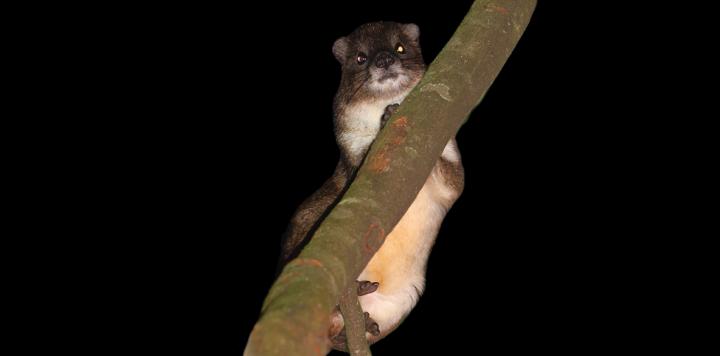The discovery, which was part of a study of the vocalisations of nocturnal animals in the Taita Hills, was published in mid-December in the scientific journal Discovery.
Very little is known about the diversity and ecology of tree hyraxes because these animals, which look like large guinea pigs but are distant relatives of elephants, are mainly active at night in the tree canopies in Africa’s tropical forests. These animals are known to be able to scream with the strength of more than one hundred decibels, but the ‘strangled thwack’ calls that have been recorded in Taita’s forests have not been described anywhere else.
The recordings reveal that the Taita tree hyraxes sing
The tree hyrax song may continue for more than twelve minutes, and it consists of different syllables that are combined and repeated in various ways.
“The singing animals are probably males attempting to attract females that are willing to mate,” postulates Hanna Rosti, who spent three months in Taita’s forests, following the nocturnal mammals and recording their vocalisations.
The results suggest that the two populations of dwarf galago in the Taita Hills may belong to different species. The calls of the animals of the smaller population are very similar to those of the Kenya coast dwarf galago, a species that has previously been thought to live only in coastal, low elevation forests. The peculiar calls of the second population cannot yet be linked with certainty to any known species.
“The taxonomy of many nocturnal mammals remains poorly known, and many populations have not been studied at all yet,” says researcher Henry Pihlström, who reviewed the complex taxonomy of tree hyraxes and galagos for the published study.
###


